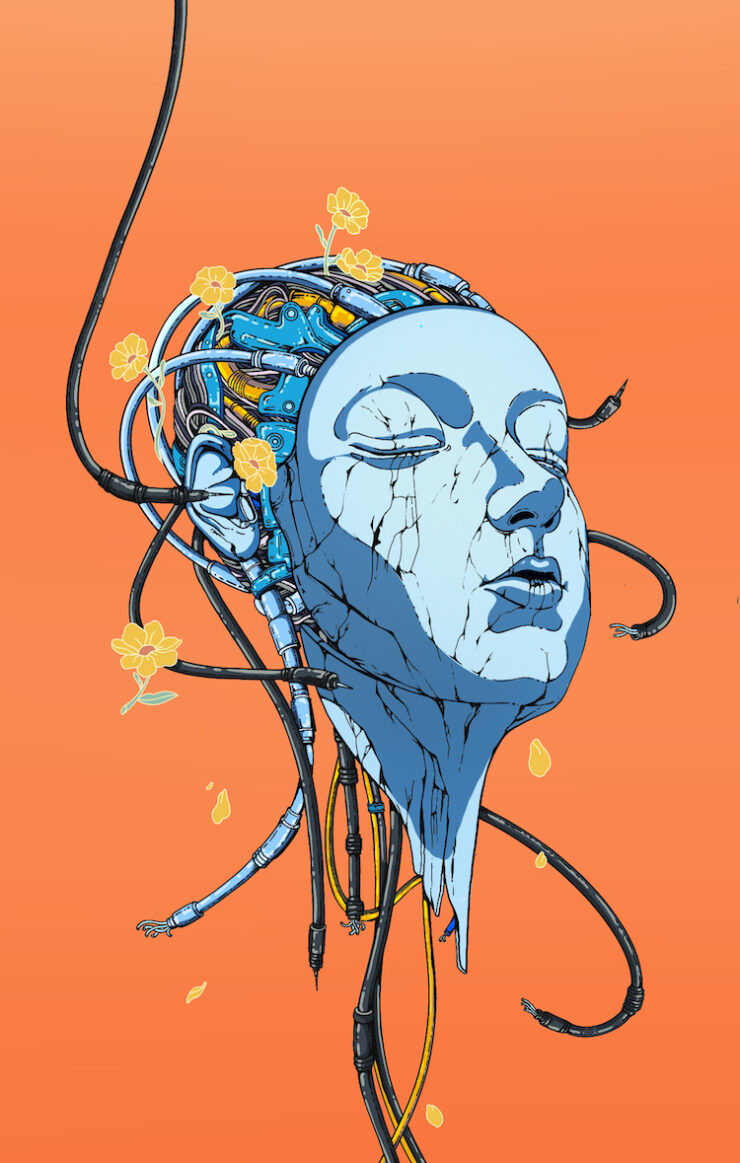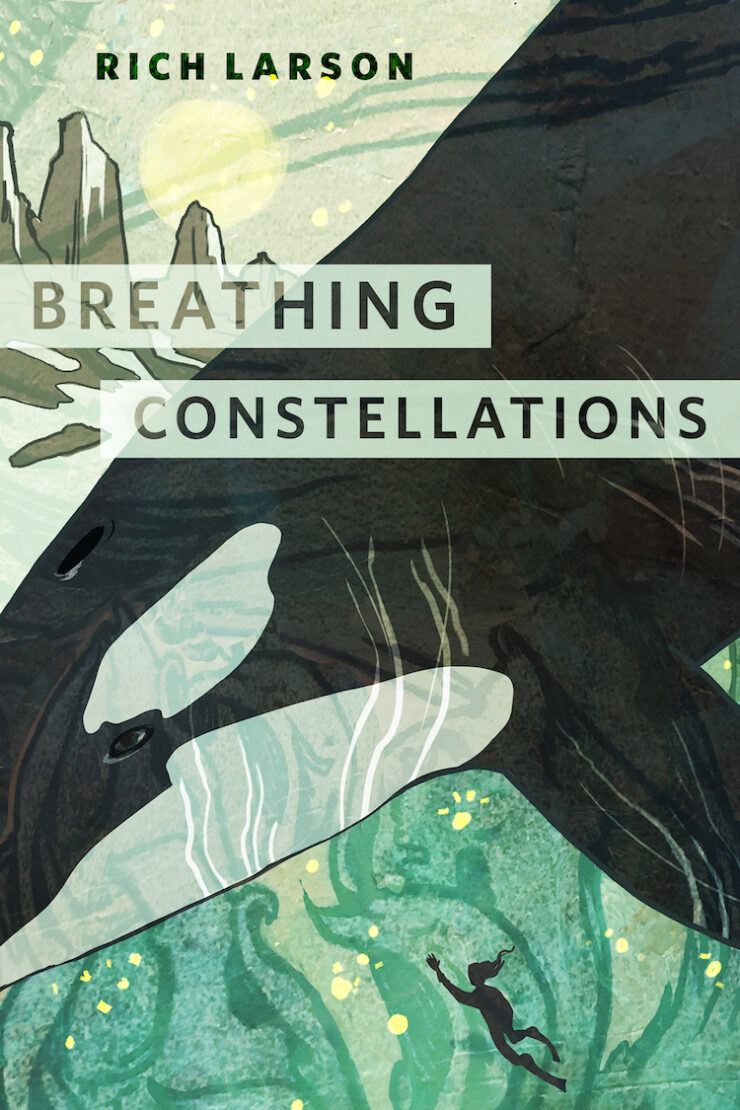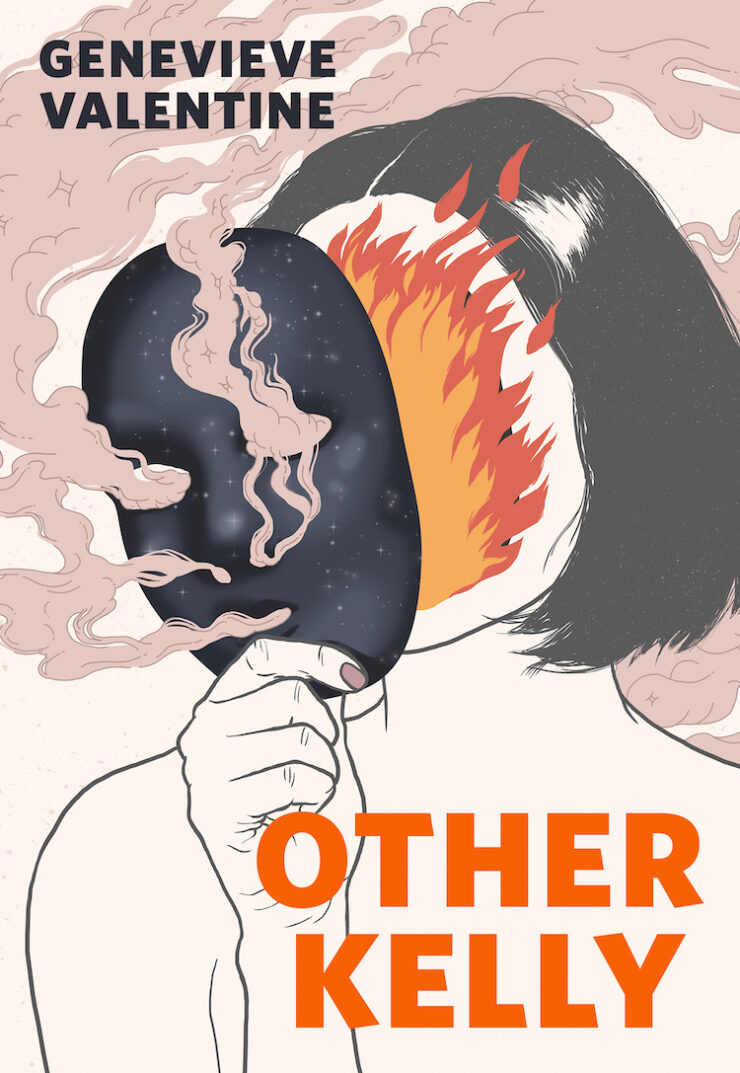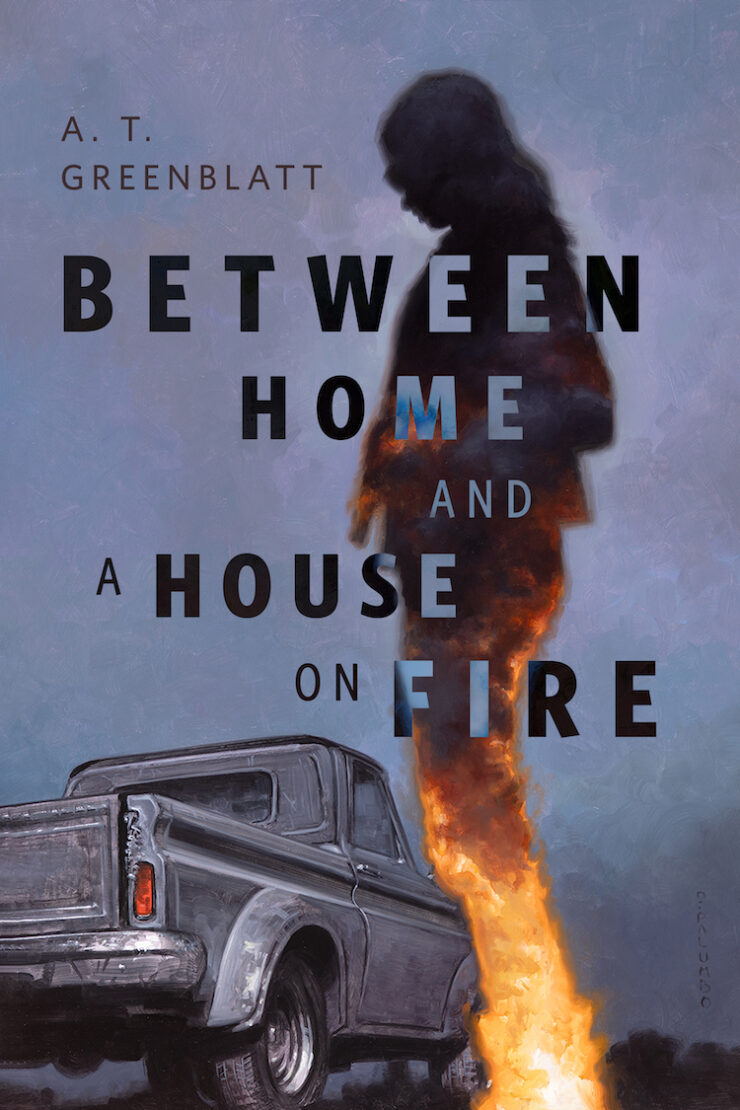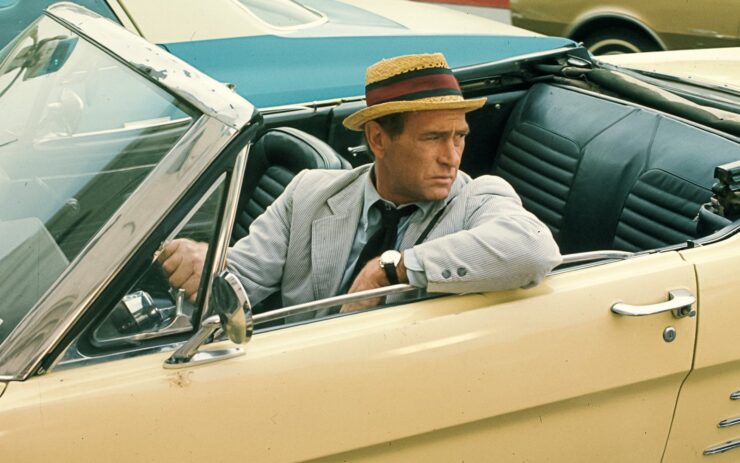I’m not really into that whole, squishy, nostalgia stuff. I don’t send out “What Happened on Your Birthday” cards, I’m not an assiduous viewer of MeTV (except for catching up with Svengoolie, because, y’know, Svengoolie), and anybody who hits me with the conversation starter, “Remember when…” runs a high risk of getting thrown out the airlock. No, if I deal with film and TV of the past—which is kinda my gig here, overall—it’s without the romantic filters, looking at the impact they had on people at the time, and how they pointed the way to the tales we tell ourselves today. I refuse to get misty over yesteryear.
But I’ll make an exception for Kolchak: The Night Stalker.
It’ll be fifty years this fall since the schlubby, cassette recorder-toting reporter, played by Darren McGavin, battled various and sundry supernatural–and a handful of science-bred—entities. It’ll be fifty years since he got pushback from his dyspeptic editor (Simon Oakland), the Chicago police force, and a stock exchange’s worth of Evil Corporations. And it’ll be fifty years since a teenage me, just then crossing the threshold into adulthood, stumbled upon the show, not having seen the two TV films that were its breeding ground, but still becoming entranced with the show’s thumb-in-the-eye attitude, its wit, and its weird takes on horror standbys.
I was not alone. Kolchak lasted only a single twenty-episode season, put to death by mutual agreement of its network, for ratings reasons, and its principal actor, for production reasons. But that was enough for it to worm its way into the nerd zeitgeist, bolstered by a Trekkish success in reruns. It never quite rose to the prominence of Gene Roddenberry’s brainchild, but made such an impression with a certain sector of the public that, without it, it’s hard to conceive what would have come of the likes of Buffy the Vampire Slayer, Supernatural,and most notably The X-Files, whose creator Chris Carter made no bones about where he’d found his inspiration.
And it must be said that that success came about sometimes in spite of the show’s own efforts. Following on the heels of two incredibly successful Movies of the Week, The Night Stalker (1972) and The Night Strangler (1973)—both written by Richard Matheson and directed by Dan Curtis—Kolchak: The Night Stalker was born when producing studio Universal opted to take the concept to series rather than going for a proposed third film. Curtis and Matheson bowed out early, citing their skepticism over a monster-of-the-week premise. Which I can dig, although I suspect that the unspoken end of that objection included the phrase, “…on a TV budget.”
That wouldn’t have been a far-fetched concern: Universal at the time was a veritable production factory. While it did boast the likes of Night Gallery and occasionally ventured into speculative areas—like an episode of The Name of the Game set in an ecologically-ravaged Los Angeles and directed by some kid named Steven Spielberg (wonder what happened to that guy?)—the studio favored procedurals and doctor shows, and efficiency over artistry.
It wasn’t as if the Kolchak producers—including McGavin in an uncredited capacity and Cy Chernak, who counted among his credits Ironside and The Virginian—didn’t try. There was some credible stunt work, particularly in the early episodes; the directors at least endeavored to create a moody mise-en-scène; and there was the occasional striking image, including a fiery finale –complete with a boundary-pushing flaming crucifix—for a vampire-themed episode.
But it’s clear the production kept hitting up against constraints of time, budget, or both. Those monsters-of-the-week were among the leading victims—the giant reptile of the series’ finale wouldn’t have passed muster on the earliest Doctor Who episodes; and the idea of a sword-brandishing, headless motorcycle gang member might have looked cool on paper, but in practice it wound up exactly as you’d expect: A stunt person trying to pilot a bike with one hand while wearing a head-covering, oversize leather jacket that David Byrne wouldn’t have sniffed at.
And yet, despite all the shortcomings arrayed against it, Kolchak managed to claim its rightful place in genre television, albeit on its own, cockeyed terms. One advantage it had was in its casting. By dint of the mammoth presence Universal had in the industry at the time, the producers could call upon a memorable roster of both rising stars, including Eric Braeden, William Daniels, and CHiPs own Erik Estrada, and notable character actors, including Hans Conreid, Alice Ghostly, Dick Van Patten, and Margaret Hamilton (and John Fielder, because of course John Fielder). But the all-time award winner for creative casting had to go to that headless biker episode, titled “Chopper” (get it?), which featured among its cast Larry Linville, Jesse White, Art Metrano, and Jim Backus, all participating in a script based on a story by… wait for it…Bob Gale and Robert Zemeckis. (And whatever happened to those kids?)
None of those casting decisions would’ve meant anything if it weren’t for ol’ Carl Kolchak himself. If the stories are correct and Darren McGavin was less than satisfied with the product he and his crewmates were turning out, it didn’t show up on the screen. In his battered seersucker suit and ever-present straw hat (I’ve since discovered that there’s a whole army of fans desperately trying to find the source for that hat, with no luck so far), Kolchak was an endearing amalgam of confidence, seediness, calculation, and desperation. Dubbed in the second TV movie by his ever-put-upon boss Tony Vincenzo (Oakland) as a refugee from The Front Page, he was the chipper, funhouse mirror rendition of Ace in the Hole’s (1951) yellow journalist Chuck Tatum (Kirk Douglas), affable to those who could be of use to him, annoying to officials and the elite, and unhesitant about getting down into the grunge if it’d lead to a good story. One of the genuine pleasures of Kolchak was watching McGavin spark off against his fellow players, whether the multitudes of guest stars, or the staff of the Independent New Service where Kolchak worked, another set of distinctive characters that included—in addition to Oakland—Ruth McDevitt as the sweet, octogenarian Jane-of-all-trades Emily Cowles, and Jack Grinnage as Ron Updyke, a well-dressed, fastidious, and supercilious transplant from… ahem… San Francisco (don’t worry, it was a pretty even-handed portrayal for the time). McGavin was never subtle, but he managed to exude such charm that it’s unfortunate that it took close to a decade for the actor to finally receive a Major Award for his efforts. (Yes, that’s an A Christmas Story joke.)
But arguably the most endearing thing about Kolchak, and possibly the series’ most notable innovation, was that this dogged journalist was typically scared shit of the supernatural forces he was dealing with. In a TV landscape where the heroes were generally square-jawed and resolute, facing down their adversaries while secure in the rightness of their cause, Kolchak was the reluctant champion we could all identify with. Gangsters, bodyguards and the threat of arrest and jailtime didn’t daunt him, but confronted with whatever monster-of-the-week was lurking about, he’d choose flight over confrontation, and any victory he lodged was just as likely by sheer dumb luck as calculated strategy. I don’t think I’m alone in saying that the sight of the man plunging into battle while realizing he was in way over his head was the highlight of any episode.
Granted the challenges that Kolchak faced could vary widely in quality. Way before David Chase gave birth to Tony Soprano, he was brought onto Kolchak as story consultant, and eventually contributed to a large portion of the scripts. A couple of years before being recruited, he had written the screenplay for an intriguing and surprisingly violent little horror film called Grave of the Vampire (1972), whose most notable feature were sequences of the titular bloodsucker throwing a bunch of victims around. That seemed to transfer over to Kolchak, which premiered with a group of generically titled episodes—“Zombie,” “The Werewolf,” etc.—following a generically constructed plot that had the monster-of-the-week… throwing a bunch of victims around. It led to some nice stunt work, but could only go on for so long.
As the series, and Chase, found their footing (and the producers maybe discovered they couldn’t afford an army of stuntpeople on a weekly basis), Kolchak’s adversaries became more interesting, and occasionally even affecting. There was R.I.N.G, an android whose scrambled circuits compelled it to seek out a humanity it could never achieve (interestingly, the Evil Corporation in this case was called the Tyrell Institute, which suggests that Blade Runner’s David Peoples and The X-Files’ Chris Carter should one day get together over coffee to reminisce), and Pepe Torres (Estrada) a shallow hedonist who, in “Legacy of Terror,” chooses to be sacrificed to an Aztec god because, by his own admission, he’d rather live one year being coddled by beautiful women—and then have his mother taken care of for the rest of her life—than slave away at a dead-end job. But for me, the standout creature belonged to an episode aired midpoint in the show’s run: the Rakshasa, of “Horror in the Heights.”
I want to be clear here: “Horror in the Heights” is not an especially groundbreaking episode of Kolchak. It by and large follows the series’ basic template: Monster goes around killing people; Kolchak is the first to suspect that there’s more going on than meets the eye; he consults experts; gets pushback from the police and Vincenzo; and eventually vanquishes the foe, almost in spite of himself. But coming in the latter half of the series run, scriptwriter and Hammer Film icon Jimmy Sangster—in his only contribution to the series—worked in a few little twists on the theme that, half a century on, continue to maintain this ep’s rep as one of the series’ best.
Kolchak wasn’t especially big on social commentary—hell, television overall was still cautiously finding its way around the concept—but it would occasionally land on a challenging idea, whether it was poor Pepe Torres trying to rise above his lot in life, or, as in this episode, the suggestion that Kolchak’s adorable, elderly co-worker Emily might still have an active sex life. But “Horror in the Heights” starts off with a darker observation, setting itself in the crumbling, fictional neighborhood of Roosevelt Heights, where an aging Jewish population is being preyed upon by an especially insidious monster. To a night watchman, it appears as a beloved rabbi. To a couple walking home from a movie, it’s a trusted police officer. Only when the victim comes close enough to the apparition does it reveal its true form, just before it slaughters them.
Where Sangster puts his distinctive imprint on the episode is the way he works in numerous variations on the idea of context, and the disruption thereof. The monster appears as a trusted individual, but in places where they shouldn’t be—a rabbi typically doesn’t wander around a slaughterhouse at night; and later when the beast presents itself to two policemen, one sees it as a hospitalized sergeant, the other as his own mother. When Heights resident Harry Starman (this episode’s MVP, Phil Silvers) accompanies Kolchak during his investigation of a fenced-off area in an alleyway, the civilian conducts a conversation with the hidden journalist, all the while watching another Kolchak approach him.
Where it gets good, though, is how the contextual games spread out from the monster itself to the very way the story is told. The monster hangs out in an alleyway bedecked in swastikas, and it’s easy—too easy—to connect the symbols to a history that the aging, Jewish residents of the Heights would know painfully well. But it turns out we’re wrong: Fronting the alleyway is a newly-opened Indian restaurant, whose owner, Ali Lakshmi (Abraham Sofaer), is himself operating under a disguise. He’s actually a demon hunter, charged with tracking down the Rakshasa, a fiend whose species manifest at times when humanity is on the brink of moral collapse (looks like more social commentary, there—‘twas ever thus). The swastikas are not symbols of antisemitic hate, but religious talismans meant to ward off the demon. We start off thinking we’re dealing with one faith, only to discover ourselves being detoured toward another.
But the episode saves the most delicious mind-bleep for last. Having been bequeathed a demon-killing crossbow by the dying Ali, Kolchak wanders out into the alleyway, only to encounter the Rakshasa in the guise of dear, sweet Emily. In arguably the most disturbing confrontation in the whole series, Kolchak brandishes the weapon against a diminutive senior citizen, as the woman toddles toward him, mewling excuses for her presence. “If you don’t stop right there, I’m gonna have to… I’m gonna have to shoot you,” Kolchak warns, in the same tone a parent might threaten to turn the car around if the kids in back don’t stop picking on each other. Emily, of course, doesn’t relent.
I’m not sure, seven years after a shocked audience heard Captain Kirk utter the word, “Hell,” that anyone was yet ready for the sight of a seemingly harmless old woman clutching a crossbow bolt planted firmly in her gut. Kolchak gives us that, and it’s just as disconcerting as you can imagine. (Spoiler: “Emily” does turn out to be the Rakshasa.)
It’s pretty much that scene that sealed my love for Kolchak: The Night Stalker. Director Michael Caffey, who around that time was logging credits on the likes of The F.B.I., Cannon,and Medical Center, and for whom this was the only Kolchak episode he helmed, makes some good choices throughout, including keeping the rather tatty monster costume obscure and out-of-focus for most of the hour (we only get a glimpse of its static, demonic mask at the end). But his biggest achievement might be in his steering of that finale, in allowing McGavin to give his own, idiosyncratic read—more confused and bemused than frightened—to the confrontation, and delivering that indelible image of Emily impaled.
In another ten years, Ghostbusters would become a hit by combining a piquant mixture of comedy and terror. Kolchak: The Night Stalker in general, and “Horror in the Heights” in particular, anticipated the trend in their own fashion, and pointed the way for all those who would follow. Flawed as it may have been, the show was also possessed of a kind of innovative genius, one whose mark can still be sensed today.
Adverse to sentiment as I am, it’s still a special pleasure to be able to revisit the influential films and TV of my youth; it was especially fun reacquainting myself with Kolchak: The Night Stalker, warts and all. How about you? Is there a special movie or series that still has a treasured place in your memory? Is there another episode of Kolchak that ranks higher in your estimation? Please take advantage of the comments section below to leave your thoughts. And remember to make it cordial and considerate—we have our own exorcists here, and they’re quick on the holy water.


